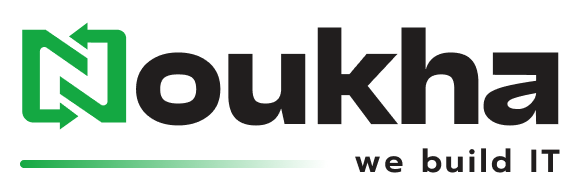AR and VR are finally hitting their stride. After years of overhyped promises and clunky implementations, these technologies are actually solving real problems for businesses and users alike.
What’s different now? The tech has gotten good enough to work reliably, costs have dropped to reasonable levels, and – maybe most importantly – people are starting to expect these kinds of experiences.
Shopping is Getting Smarter
Online shopping has always had one big problem: you can’t touch, feel, or properly see products before buying. Sure, you get photos and descriptions, but how many times have you ordered something that looked completely different when it arrived? 
AR is changing this in a big way. Furniture retailers are seeing return rates drop by more than half when customers can visualize pieces in their actual rooms before purchasing. Fashion brands let shoppers “try on” clothes and accessories virtually. Even complex products like electronics can be explored in 3D before anyone commits to buying.
The technology works through regular web browsers now – no special apps needed. Customers just point their phone camera and see how products look in their space. It’s becoming so common that shoppers are starting to expect it, especially for bigger purchases.
For businesses looking into web application development solutions in Coimbatore and beyond, AR shopping features aren’t just nice-to-have anymore. They’re becoming table stakes for competitive e-commerce.
Companies working with experienced web and mobile application development services teams are getting these features implemented faster and cheaper than ever before. The key is finding developers who understand both the technical side and the user experience side.
Training Gets an Overhaul
Corporate training has been stuck in the past for way too long. Death by PowerPoint, boring videos, classroom sessions that put people to sleep – none of it works particularly well, and everyone knows it.
VR training is different because it’s hands-on. Instead of watching someone else do a task, employees practice it themselves in a safe virtual environment. Medical students can perform surgeries without risk. Factory workers learn to operate dangerous equipment without actual danger. New hires can walk through office spaces and meet teammates even when working remotely.
The results speak for themselves. Companies using VR for safety training see workplace accidents drop significantly. Knowledge retention rates are much higher compared to traditional methods. And here’s something interesting – employees actually enjoy the training sessions instead of dreading them.
But here’s the catch: the VR training needs to be well-designed, not just flashy. Working with a web app design company that understands learning psychology matters more than finding one with the fanciest graphics capabilities.
Education is Finally Getting Interactive
Traditional education has a serious engagement problem. Students who are used to interactive apps and games sit through lectures that haven’t changed much in decades. Textbooks compete with TikTok for attention. It’s not working.
AR and VR offer a way forward. History lessons become virtual field trips to ancient civilizations. Science classes let students manipulate DNA models with their hands. Language learning happens through conversations with AI characters in realistic scenarios.
The pandemic pushed everyone into remote learning, but most solutions felt like poor substitutes for being there in person. AR and VR can actually make remote learning better than traditional classroom experiences in some cases.
Schools and universities partnering with skilled web and mobile application development company teams are finding that these technologies don’t just improve learning outcomes – they help attract students who have lots of options for where to study.
The Technology Finally Works
A few things came together to make AR and VR practical for everyday use. Smartphones got powerful enough to handle complex graphics. Internet speeds improved enough for real-time processing. And development tools became much easier to work with.
Most AR experiences now run directly in web browsers. No special hardware required beyond a smartphone or tablet that most people already have. The heavy processing can happen in the cloud, so even older devices can deliver decent experiences.
This is huge for SaaS app development company teams and their clients. Instead of building for expensive, specialized hardware that hardly anyone owns, they can target devices that are already in everyone’s pocket.
A good custom web app developer knows how to make AR features work smoothly across different devices and network conditions. The same app might show high-end visuals on newer phones while providing simpler but still useful features on older hardware.
Real Business Results
Let’s talk numbers, because that’s what matters when deciding whether to invest in this stuff.
E-commerce sites with AR features typically see conversion rates jump 20-30%. Training programs using VR report knowledge retention that’s 3-4 times better than traditional methods. Customer service costs go down when people can point their camera at broken products and get AR-guided repair instructions.
These aren’t cherry-picked success stories. The pattern holds across different industries and company sizes. When AR/VR solves actual problems instead of just showing off cool technology, businesses see measurable improvements.
The trick is implementation. Companies that approach this strategically – identifying specific problems to solve rather than just adding cool features – tend to see much better results.
Challenges Nobody Wants to Talk About
Every technology has downsides, and AR/VR is no exception. Let’s be honest about what you’re getting into.
Money is still a factor. Basic AR features might cost $15,000-25,000 to implement properly. More complex VR applications can easily hit six figures. The technology is cheaper than it used to be, but it’s not cheap.
Technical complexity remains real despite better development tools. Things can still go wrong – compatibility issues, performance problems, content that takes longer to create than expected. You need experienced teams to navigate these challenges.
User adoption isn’t automatic. Just because you build impressive AR/VR features doesn’t guarantee people will use them. The technology needs to solve real problems in intuitive ways, or users will ignore it no matter how advanced it looks.
Content creation requires specialized skills. Building good 3D models and immersive environments takes time and expertise that many companies don’t have in-house.
Why Timing Matters
There’s usually a sweet spot with new technology – after it becomes reliable but before everyone else adopts it. AR and VR are in that window right now.
The technology works well enough for practical business applications. Costs have dropped to reasonable levels for most companies. But adoption isn’t universal yet, which means early movers can still gain competitive advantages.
Companies that implement AR/VR thoughtfully over the next year or two will establish market positions that become much harder for competitors to match later on.
Waiting for the technology to become “completely mainstream” usually means giving up first-mover advantages. In competitive markets, that hesitation can be costly.
Getting Started Without Breaking the Bank
The smart approach is starting small and specific. Pick one problem you want to solve – high return rates, ineffective training, low engagement – and figure out how AR or VR might help with that particular issue.
Don’t try to build everything at once. Start with core functionality that addresses real user needs, then expand based on what you learn from actual usage data.
Work with development teams that ask about your business goals before they start talking about technical features. The best partnerships feel more like strategic consulting than just hiring coders.
Plan for iteration. Your first AR/VR features probably won’t be perfect, and that’s fine. The goal is learning what works for your specific situation and improving over time.
At Noukha, we’ve seen this pattern repeatedly – businesses that approach AR/VR as tools for solving existing problems tend to be much more successful than those that implement the technology for its own sake.
What’s Coming Next
The shift toward immersive digital experiences is accelerating. Shopping, training, and education are all changing in ways that will define competitive landscapes for years.
Organizations that understand this shift and act strategically will help shape industry standards. Those that wait for certainty will find themselves playing catch-up instead of leading the way.
AR and VR aren’t just about cool technology anymore. They’re about creating better experiences for customers, employees, and students. The companies that figure this out first will have significant advantages over those that don’t.
The future of interactive experiences is being written now. The question isn’t whether this technology will impact your industry – it’s how quickly you’ll adapt to take advantage of the opportunities.
Frequently Asked Questions
Q: What should we realistically budget for AR features in our web application?
A: Budget depends on what you’re trying to accomplish, but here are some rough ranges. Simple product visualization might cost $15,000-30,000 for basic implementation. More sophisticated features like virtual try-ons or complex 3D interactions can run $40,000-80,000. Full VR training platforms often start around $75,000 and can go much higher depending on complexity. The key is starting with one specific feature that solves a clear business problem, then expanding based on results. Most successful implementations begin small rather than trying to do everything at once.
Q: Do our users need special apps or equipment to access AR/VR features?
A: For AR, not anymore. Modern smartphones and tablets can run AR experiences directly through web browsers – users just visit your site and allow camera access. No app downloads required. VR is a bit different – while dedicated headsets provide the best experience, many applications work with inexpensive cardboard viewers that cost under $15. The goal is making access as easy as possible. If users have to jump through hoops to use your AR/VR features, adoption rates will suffer no matter how impressive the technology looks.
Q: How long does it typically take to develop and launch AR/VR features?
A: Timeline varies quite a bit based on scope and team experience. Basic AR product visualization can often be live in 6-10 weeks with an experienced development team. More complex implementations like VR training systems typically need 3-6 months from planning to launch. But here’s what matters more than total timeline – getting core functionality working and gathering user feedback as quickly as possible. It’s better to launch something simple that works than spend months building comprehensive features that might miss what users actually want. Most successful projects launch iteratively rather than trying to build everything before going live.



